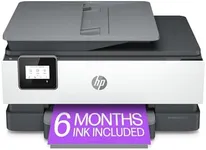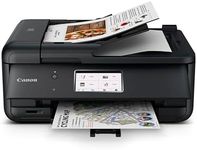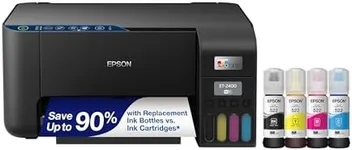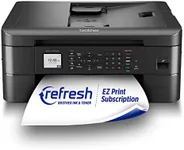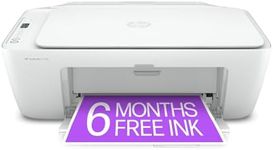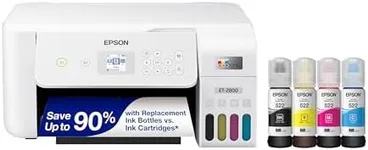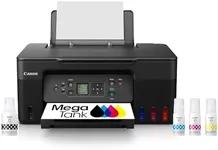Buying Guide for the Best Printers All In Ones
When choosing an all-in-one printer, it's important to consider your specific needs and how you plan to use the device. All-in-one printers combine printing, scanning, copying, and sometimes faxing capabilities into a single machine, making them versatile and convenient for both home and office use. To find the best fit for you, you'll need to evaluate several key specifications and features. Understanding these specs will help you make an informed decision and ensure that the printer you choose meets your requirements.Print Quality (Resolution)Print quality is measured in dots per inch (DPI). Higher DPI means better print quality, which is important if you need to print high-resolution images or detailed documents. For general home or office use, a resolution of 600 DPI is usually sufficient. If you need to print professional-quality photos or graphics, look for a printer with a resolution of 1200 DPI or higher. Consider your typical printing tasks to determine the level of print quality you need.
Print SpeedPrint speed is measured in pages per minute (PPM). This spec indicates how quickly a printer can produce documents. For occasional printing, a lower PPM (around 10-20) may be adequate. For frequent or high-volume printing, especially in an office setting, look for a printer with a higher PPM (20-40 or more). Assess how often and how much you print to decide the appropriate print speed for your needs.
Connectivity OptionsConnectivity options determine how you can connect your printer to other devices. Common options include USB, Wi-Fi, Ethernet, and Bluetooth. Wi-Fi and Ethernet are ideal for networked environments, allowing multiple users to access the printer. USB is suitable for direct connections to a single computer. Bluetooth is useful for printing from mobile devices. Consider your setup and how you prefer to connect your devices when choosing a printer.
Paper HandlingPaper handling refers to the types and sizes of paper a printer can accommodate, as well as its paper tray capacity. If you print a variety of documents, such as envelopes, labels, or legal-sized papers, ensure the printer supports these formats. A larger paper tray capacity is beneficial for high-volume printing, reducing the need for frequent refills. Think about the types of documents you print and how often you print to determine the right paper handling capabilities.
Scanning FeaturesScanning features include resolution, color depth, and the presence of an automatic document feeder (ADF). Higher resolution and color depth are important for scanning detailed images or documents. An ADF allows for the automatic scanning of multiple pages, which is useful for large documents. If you frequently scan documents, especially multi-page ones, look for a printer with a high-resolution scanner and an ADF. Consider your scanning needs to choose the right features.
Ink or Toner CostsInk or toner costs can significantly impact the overall cost of owning a printer. Some printers have high initial costs but lower ongoing ink or toner expenses, while others may be cheaper upfront but more expensive to maintain. Look for information on the cost per page and the yield of the ink or toner cartridges. If you print frequently, a printer with lower ink or toner costs will be more economical in the long run. Evaluate your printing volume to determine the best option.
Duplex PrintingDuplex printing allows a printer to print on both sides of a sheet of paper automatically. This feature is useful for saving paper and creating professional-looking documents. If you often print double-sided documents, such as reports or booklets, a printer with automatic duplex printing will be very convenient. Consider how often you need to print double-sided documents to decide if this feature is important for you.
Size and DesignThe size and design of a printer can affect where you can place it and how it fits into your workspace. Compact printers are ideal for small spaces, while larger models may offer more features but require more room. Consider the available space in your home or office and choose a printer that fits comfortably without compromising on the features you need. Think about the physical space and aesthetic preferences when selecting a printer.
